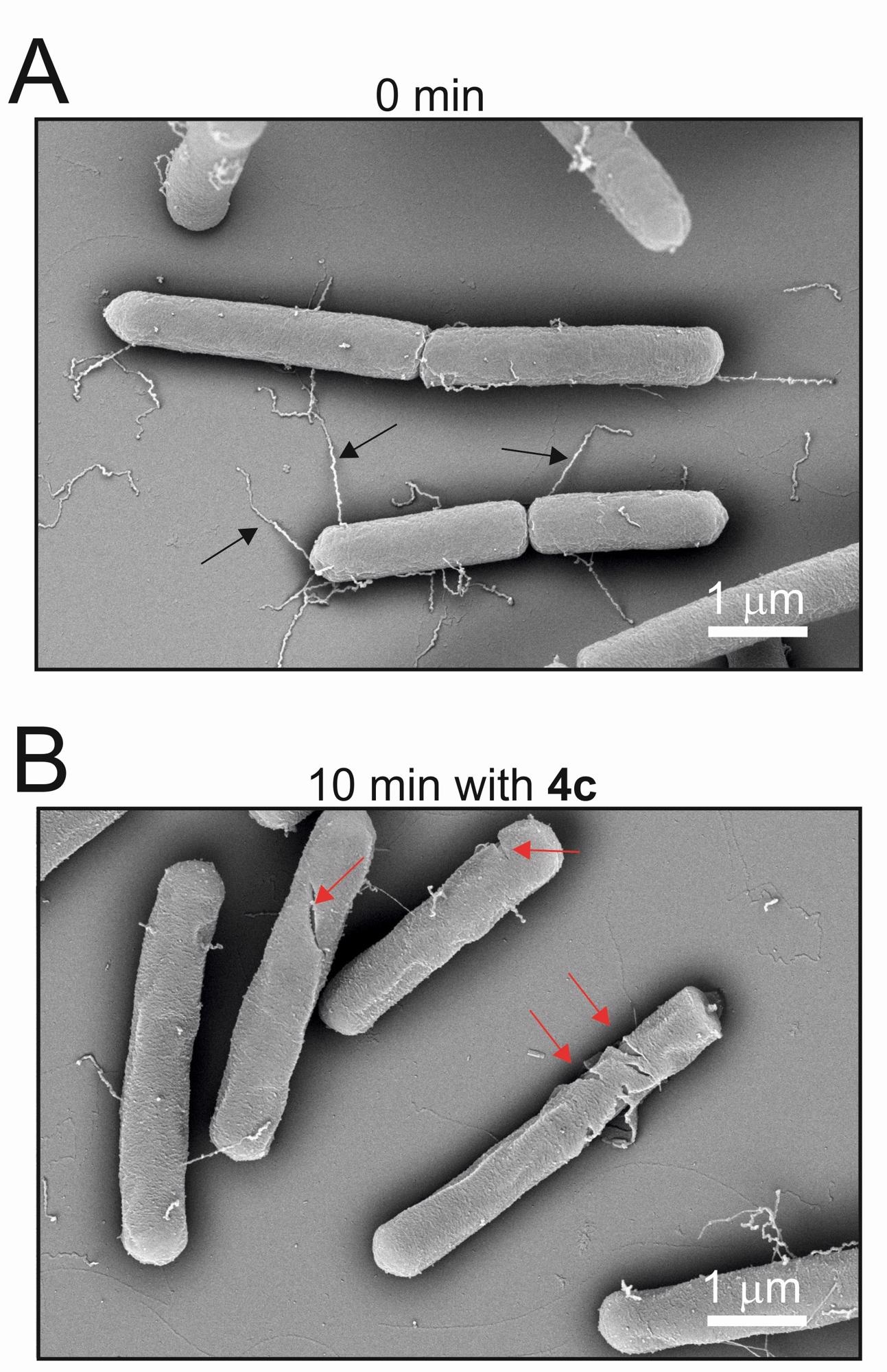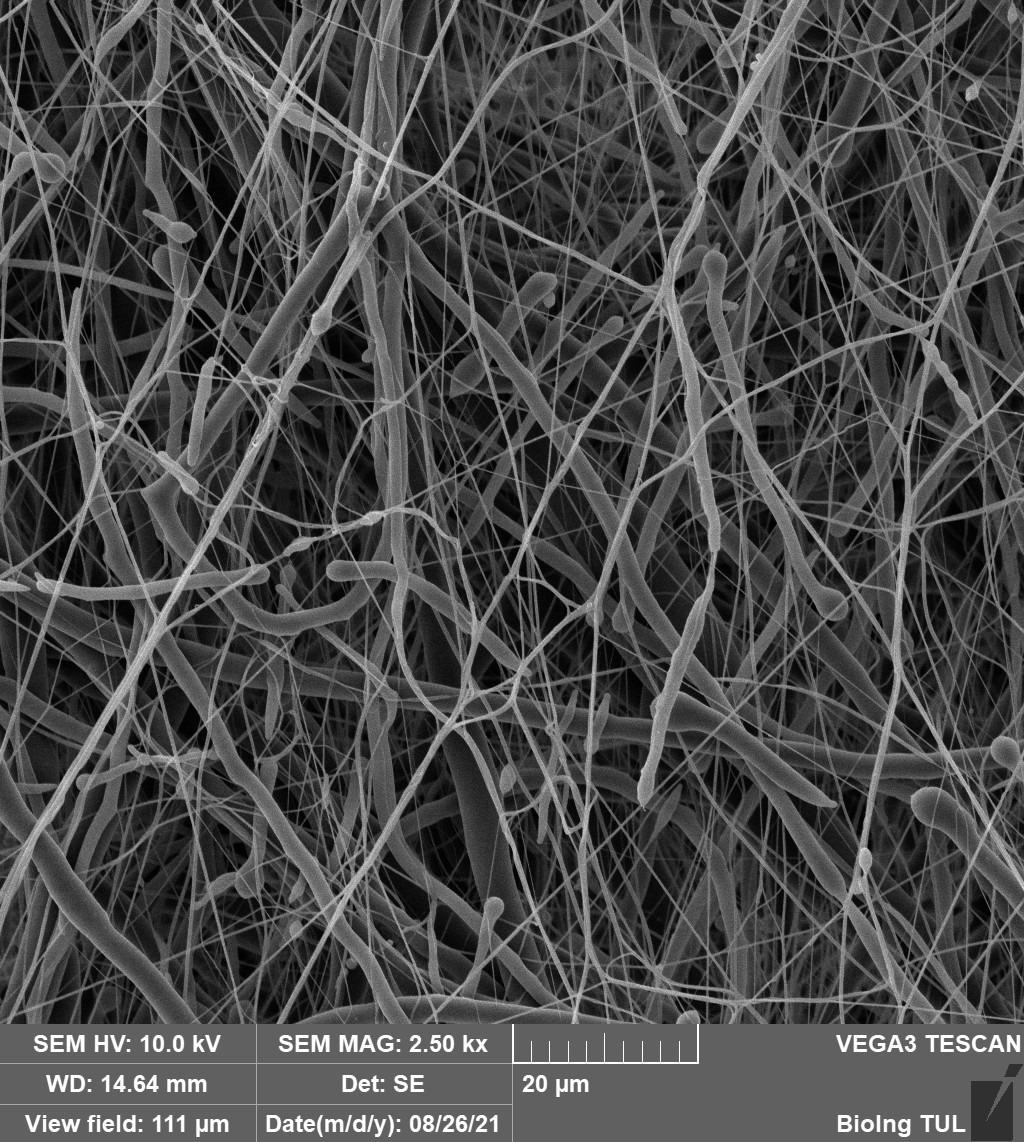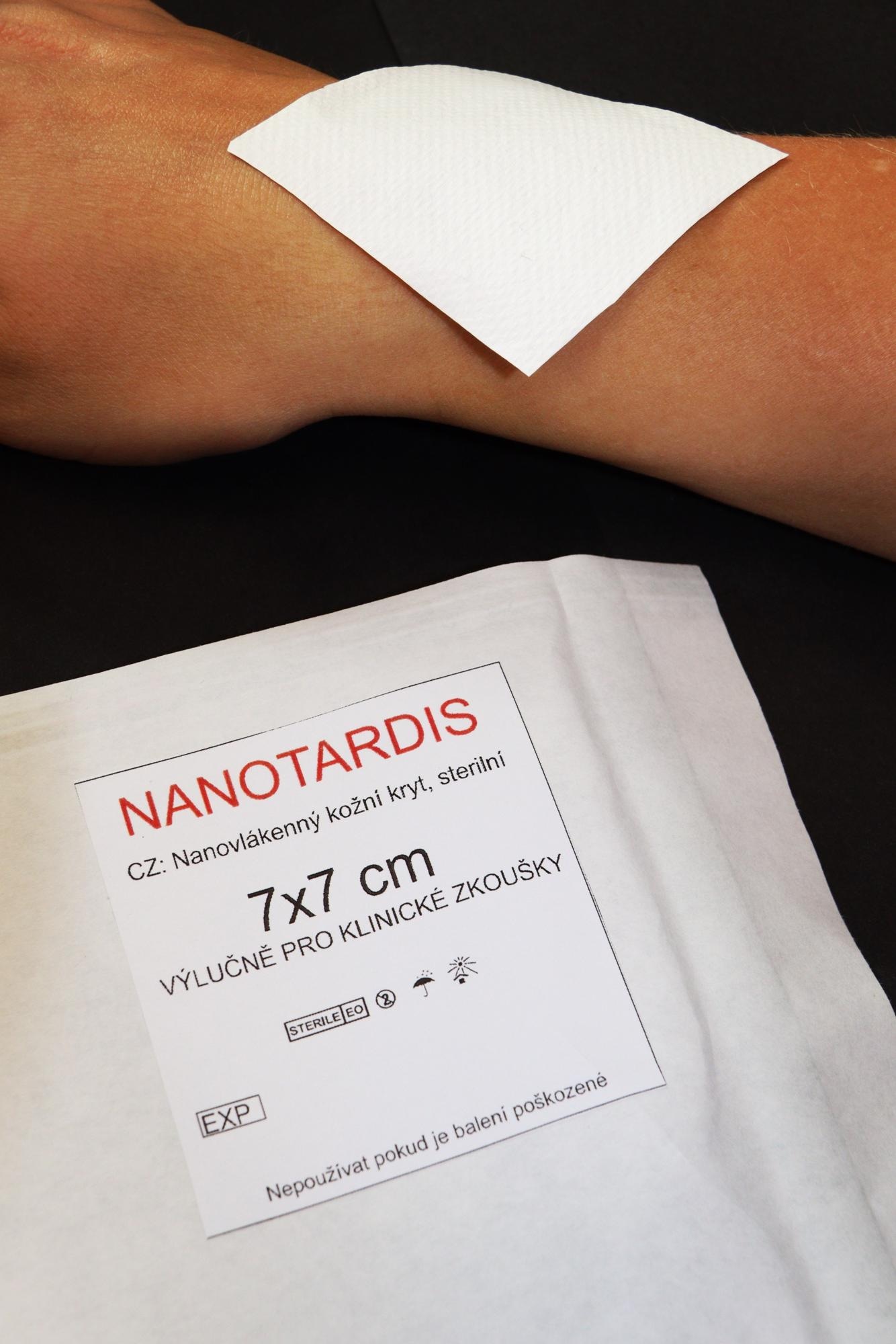AZoNano speak to Dr. Dominik Rejman about the innovative wound treatment, NANO-LLPO. This nanofibrous dressing can not only help to prevent bacterial infection but can promote wound healing as well. Read more about the research behind this exciting development, and how it is helping to advance the integration of nanotechnology in biomedicine.
Please could you introduce yourself and tell us what inspired your career in biotechnology research?
My name is Dominik Rejman, and I am a group leader at the Institute of Organic Chemistry and Biochemistry of the Czech Academy of Sciences, Prague (IOCB Prague). I graduated from the UTC Prague from organic chemistry and continued towards Ph.D. study at the IOCB Prague in the field of modified nucleosides, nucleotides, and oligonucleotides.
Since these molecules often possess fascinating biological properties, I have been connected with biochemistry, biology, and medicinal chemistry from the very beginning of my carrier. During my first postdoc position at the University of Sheffield, I worked on dinucleoside polyphosphates and their analogs. Then, I dealt with inhibitors of IMPDH and antiparasitic compounds in the Center for Drug Design at the University of Minnesota.
When I returned to Prague, my focus was aimed at antimicrobial compounds and, in general, new strategies to understand and treat infectious diseases.
How did you begin your involvement with nanomaterials?
Capitalizing on my antiparasitic compounds research, I have discovered, in collaboration with L. Krásný from the Institute of Microbiology and M. Kolář from the Palacký University Olomouc, novel antimicrobial compounds termed lipophosphonoxins (LPPO).
Following a lecture I gave on this subject, I was approached by the Head of Prague Burn Center R. Zajíček. He expressed his concern about infections in burn patients, and since he was involved in clinical trials of new nanomaterial fiber dressing NANOTARDIS developed in the Technical University, Liberec (TUL), we ended up with the idea of combining our molecules with the new nanomaterial.
Could you give an overview of your research?
I collaborated with professor D. Lukáš from TUL on this new composite material. First, we developed the fabrication method and then evaluated its antibacterial and mechanical properties. Finally, we performed the first in vivo experiment to validate its use in infectious wounds, which was quite successful.
NANO-LPPO is an exciting innovation in preventing skin infections as well as preventing bacterial strain resistance. Could you explain how this development compares to existing treatment methods?
The nanomaterial itself can promote wound healing, forming a sort of scaffold for cells to grow. An important property is also its biodegradability, mediated by enzymes lipases that are present in the wound.
When we combine the nanomaterial with our antibacterial LPPO, the LPPO is released mostly via biodegradation.
The presence of LPPO in the material increases the rate of degradation. This technology is particularly interesting because bacteria in the wound excrete the lytic enzymes and thus enhance biodegradation, releasing the antibacterial component LPPO.

Bacillus subtilis bacteria before and after application of LPPO. The second image shows significant damage to bacteria after ten minutes. Image Credit: Institute of Microbiology of the CAS
In other words, the release of the antibacterial compound is partly controlled by the presence of the bacteria. Another important property is that the antibacterial component exerts its activity only at the site of infection. As it is not absorbed, it should not, in principle, form selection pressure for resistance development.
Moreover, we know it is very difficult for bacteria to develop resistance against LPPO – so far, we have been unable to select a resistant strain against LPPO, which is fantastic.
The effect of different concentrations of LPPO was tested on the nanofibrous wound dressings. How might different LPPO concentrations affect the ability of the nanofiber as a wound dressing?
The optimal LPPO concentration for the NANO-LPPO composite material needs to be addressed in the next experiments. So far, 5-10% seems to be sufficient to prevent infection in the wound, at least for S. aureus.
A key aspect of the methodology was defining the wettability of the wound dressing. What other parameters are important to address when designing active, biocompatible nanomaterials?
The wettability measurement was key to understanding why the presence of LPPO in the NANO-LPPO enhances its biodegradability. Other important parameters include the rate of degradation and the rate of LPPO release to the wound.
Another is the hydrophobicity of the material, which can be modified by the presence of the LPPO, as we showed, or by alteration of the polymeric composition of the nanomaterial itself.

Nonwoven nanotextile NANOTARDIS. With its morphological and physical-chemical properties, the device promotes the healing of clean acute wounds. Image Credit: Technical University of Liberec
What major obstacles do you believe currently limit the involvement of nanofibers, and more broadly nanomaterials, for clinical applications?
I do not see any serious obstacle limiting the use of nanofibers. I see some concerns regarding the use of some nanoparticles due to their accumulation in tissues and potential chronic toxicity.
Infection treatment and promoting tissue regeneration are also important for internal damage. How could this research be extended to this application?
For internal use, where we can expect more systemic exposure to the antibacterial component, an antibacterial compound with extremely low systemic toxicity and minimal tendency to select for resistance is necessary. We hope this may be the next generation of LPPO, which we are currently working on.

Nonwoven nanotextile NANOTARDIS. With its morphological and physical-chemical properties, the device promotes the healing of clean acute wounds. Image Credit: Technical University of Liberec
What are the next steps for this research, and more broadly the role of nanofibers and nanomaterials in clinical applications?
The next step in the research of NANO-LPPO will be the next phase of preclinical evaluation. This will involve a pig model, which is more relevant in terms of wound healing. When successful, then clinical evaluation can start.
I am optimistic about the use of modified nanofibrous materials in clinics, so I believe in 20 years, they will be a common tool in hospitals. I also expect that nanomaterial-based dressings for personal use will become commercially available.
News
AI Helped Scientists Stop a Virus With One Tiny Change
Using AI, researchers identified one tiny molecular interaction that viruses need to infect cells. Disrupting it stopped the virus before infection could begin. Washington State University scientists have uncovered a method to interfere with a key [...]
Deadly Hospital Fungus May Finally Have a Weakness
A deadly, drug-resistant hospital fungus may finally have a weakness—and scientists think they’ve found it. Researchers have identified a genetic process that could open the door to new treatments for a dangerous fungal infection [...]
Fever-Proof Bird Flu Variant Could Fuel the Next Pandemic
Bird flu viruses present a significant risk to humans because they can continue replicating at temperatures higher than a typical fever. Fever is one of the body’s main tools for slowing or stopping viral [...]
What could the future of nanoscience look like?
Society has a lot to thank for nanoscience. From improved health monitoring to reducing the size of electronics, scientists’ ability to delve deeper and better understand chemistry at the nanoscale has opened up numerous [...]
Scientists Melt Cancer’s Hidden “Power Hubs” and Stop Tumor Growth
Researchers discovered that in a rare kidney cancer, RNA builds droplet-like hubs that act as growth control centers inside tumor cells. By engineering a molecular switch to dissolve these hubs, they were able to halt cancer [...]
Platelet-inspired nanoparticles could improve treatment of inflammatory diseases
Scientists have developed platelet-inspired nanoparticles that deliver anti-inflammatory drugs directly to brain-computer interface implants, doubling their effectiveness. Scientists have found a way to improve the performance of brain-computer interface (BCI) electrodes by delivering anti-inflammatory drugs directly [...]
After 150 years, a new chapter in cancer therapy is finally beginning
For decades, researchers have been looking for ways to destroy cancer cells in a targeted manner without further weakening the body. But for many patients whose immune system is severely impaired by chemotherapy or radiation, [...]
Older chemical libraries show promise for fighting resistant strains of COVID-19 virus
SARS‑CoV‑2, the virus that causes COVID-19, continues to mutate, with some newer strains becoming less responsive to current antiviral treatments like Paxlovid. Now, University of California San Diego scientists and an international team of [...]
Lower doses of immunotherapy for skin cancer give better results, study suggests
According to a new study, lower doses of approved immunotherapy for malignant melanoma can give better results against tumors, while reducing side effects. This is reported by researchers at Karolinska Institutet in the Journal of the National [...]
Researchers highlight five pathways through which microplastics can harm the brain
Microplastics could be fueling neurodegenerative diseases like Alzheimer's and Parkinson's, with a new study highlighting five ways microplastics can trigger inflammation and damage in the brain. More than 57 million people live with dementia, [...]
Tiny Metal Nanodots Obliterate Cancer Cells While Largely Sparing Healthy Tissue
Scientists have developed tiny metal-oxide particles that push cancer cells past their stress limits while sparing healthy tissue. An international team led by RMIT University has developed tiny particles called nanodots, crafted from a metallic compound, [...]
Gold Nanoclusters Could Supercharge Quantum Computers
Researchers found that gold “super atoms” can behave like the atoms in top-tier quantum systems—only far easier to scale. These tiny clusters can be customized at the molecular level, offering a powerful, tunable foundation [...]
A single shot of HPV vaccine may be enough to fight cervical cancer, study finds
WASHINGTON -- A single HPV vaccination appears just as effective as two doses at preventing the viral infection that causes cervical cancer, researchers reported Wednesday. HPV, or human papillomavirus, is very common and spread [...]
New technique overcomes technological barrier in 3D brain imaging
Scientists at the Swiss Light Source SLS have succeeded in mapping a piece of brain tissue in 3D at unprecedented resolution using X-rays, non-destructively. The breakthrough overcomes a long-standing technological barrier that had limited [...]
Scientists Uncover Hidden Blood Pattern in Long COVID
Researchers found persistent microclot and NET structures in Long COVID blood that may explain long-lasting symptoms. Researchers examining Long COVID have identified a structural connection between circulating microclots and neutrophil extracellular traps (NETs). The [...]
This Cellular Trick Helps Cancer Spread, but Could Also Stop It
Groups of normal cbiells can sense far into their surroundings, helping explain cancer cell migration. Understanding this ability could lead to new ways to limit tumor spread. The tale of the princess and the [...]





















